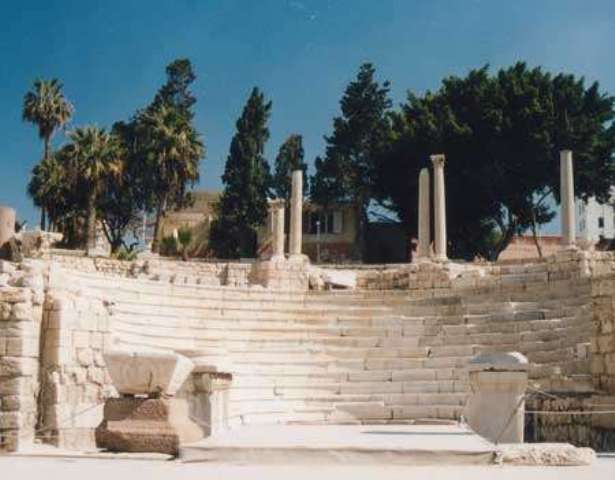Catacombs of Kom el Shoqafa: An Ancient Necropolis in Alexandria
Visitor Information
Google Rating: 4.5
Popularity: Medium
Google Maps: View on Google Maps
Country: Egypt
Civilization: Byzantine, Roman
Remains: Burial
History
The Catacombs of Kom el Shoqafa are located in Alexandria, within the Alexandria Governorate of Egypt. This underground necropolis was created during the Roman period, primarily between the late 1st century and the mid-2nd century AD. It reflects the cultural blend of Egyptian, Greek, and Roman influences that characterized Alexandria at the time.
Originally, the catacombs served as a family tomb. Over time, the site expanded to include burial chambers for multiple families. Evidence suggests that a guild of butchers may have managed the necropolis, adding new chambers and niches to accommodate more burials. The site remained in use until the early 4th century AD, showing continuous adaptation and additions.
In 215 AD, the necropolis was still active, as indicated by the “Hall of Caracalla,” which contains the remains of Emperor Caracalla’s horses. This points to the site’s ongoing importance during the Roman imperial period. The catacombs are part of a larger western cemetery area in Alexandria, distinct from other Roman cemeteries mostly located in the western necropolis, with only one known in the east.
The name “Kom el Shoqafa,” meaning “Mound of Shards,” comes from the large amounts of broken pottery and clay vessels left by visitors. These containers were used to bring food and drink for funerary rituals and were discarded at the site. The catacombs were rediscovered accidentally on September 28, 1900, when a donkey fell into the main shaft. Although excavations had begun nearby in 1892, the catacombs themselves were found by chance.
Remains
The Catacombs of Kom el Shoqafa form a multi-level rock-cut complex with at least four floors. The uppermost level, once above ground, has collapsed, while the third underground floor is now flooded by groundwater. Access to the catacombs is through a large circular stone shaft about six meters wide and ten meters deep. Around this shaft, a spiral staircase approximately 1.2 meters wide ascends. The staircase is vaulted with five rows of long stone blocks and is lit by round windows and small rectangular niches designed to hold oil lamps and incense.
The first underground floor features a vaulted chamber with two symmetrical niches resembling shrines. Each niche contains semicircular stone benches and ceilings carved in a shell shape, a Roman design from the Antonine period in the mid-2nd century AD. Beyond the entrance lies a large circular rotunda roughly 8.5 meters in diameter. This space is covered by a dome supported by six columns connected by curtain walls decorated with red geometric patterns. The rotunda floor once held five marble heads dated stylistically to the late 1st to mid-2nd century AD; these are now preserved in the Greco-Roman Museum.
Next to the rotunda is a rectangular banquet hall measuring about 8.5 by 9 meters. It has a flat ceiling supported by four Doric columns with smooth architraves. Three stone couches, called klinai, are carved from the rock and arranged to form a continuous platform. These couches, about two meters wide each, were used for funerary banquets, with inscriptions indicating that cushions were placed on them.
The second underground floor contains the main burial chamber, reached by a steep staircase of 15 wide steps. The chamber’s vaulted ceiling is decorated with shell motifs. It has three openings in the walls and is surrounded by two corridors lined with small burial niches. A platform resembling a stage overlooks this chamber, hiding part of its decorated facade until visitors reach it. Below this platform, a submerged staircase leads to the third underground floor, where human remains were found floating in water.
The third underground floor was part of the original design but is now flooded. It may have been connected to a Serapeum, a temple dedicated to the Greco-Egyptian god Serapis, though this connection remains uncertain.
The catacombs contain funerary sculptures that blend Egyptian, Greek, and Roman styles. A notable statue depicts a man and woman entwined; the man’s head is carved in Greek style, while the woman’s is Roman, illustrating the cultural fusion of the site. Two snake statues representing Agathodaemon, the Greek protective spirit, stand centrally. These snakes are decorated with Egyptian and Roman elements, and above them is a Medusa head intended to ward off intruders.









